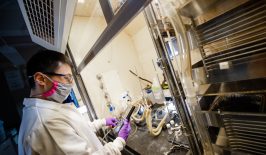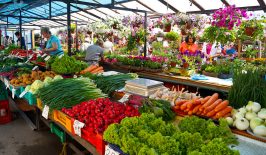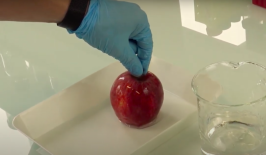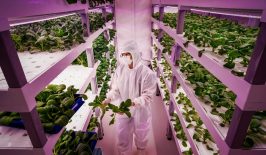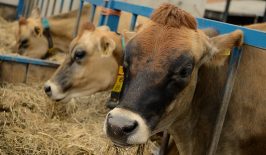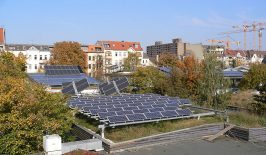These days, many people are seeking a healthier relationship with the food they eat. That might include ditching meat, eating organic or cutting out plastic packaging. For others, it’s not just a relationship with the food they want to build, but also with the farmers who produced it. With the help of an online platform, it may now be easier than ever to get to know the local farmer.
The Open Food Network bills itself as a digital farmers market, in which local producers, wholesalers and buyers can come together and create and support the birth of new, more cooperative, ways to buy and sell food. In particular, Open Food Network envisions their software being used by networks of families, neighbours or producers to create an online community in which goods, advice and expertise can be shared for the benefit of all.
For primary producers, such as farmers, Open Food Network can be simply used as an online portal to directly sell their goods to customers. Alternatively, wholesalers can also use the platform to create and manage local buying groups, as well as create national or regional food hubs to be distributed further.
The platform, which is provided open source, has also been specifically tailored to the needs of smallholders, farmers and market sellers. In some cases, farmers have developed their own distribution networks using social media, however this comes with issues of administration, organisation and payment. Open Food Network looks to provide this infrastructure in one place, as well as tailoring it to farmers’ needs.
For example, traditional online selling platforms often do not have the inherent flexibility required when it comes to selling actual real produce. Supermarkets regularly reject produce which does not meet their specifications, either in terms of size or aesthetics. Open Food Network understands this and allows farmers to sell produce that comes in all manners of shape and size. Open Food Network is arranged into various regional networks which users can search to find something local.
However, the idea goes beyond a mere online storefront for farmers and producers. Central to the ethos of the Open Food Network is the creation of more local, sustainable and circular food chains supported by local communities. The platform can also be used by individuals, cooperatives and groups of families or neighbours to create regular digital farmers markets drawing on producers in the region. Not only does this cut out the middleman (which is usually a supermarket) but can also work as the basis of a broader project in which advice, expertise and a sense of community can be shared.
Sharing is Caring
For example, when families in one Melbourne suburb found it extremely difficult – and expensive – to get hold of organic produce, they decided to deal directly with the farmers themselves. This resulted in the Westies Buying Group, an informal collective of members, who carry out weekly bulk purchases of organic goods from local producers. Members pay a small administrative members fee, and then use the Open Food Network platform to place their orders. One member then receives the orders, packages them in reusable packaging and leaves them out to be picked up by the others.
Another Australian project is the Prom Coast Food Collective, which although similar to the Westies Buyer Group, started at the other end of the spectrum. Local farmers wished to improve their ability to deal directly with customers within their communities. What resulted was an online portal in which farmers of a similar attitude and outlook, including a desire to farm sustainably, were brought together to market their produce.
For the first two weeks of every month, each individual farmer can place online what produce they have available to sell. The cooperative has selected farmers whose products ideally complement, not compete with each other. Then on the third Sunday of the month, all 24 farmers come together at one farm to pass the produce onto the customers. Importantly, each ‘Convergence Day’ also acts as a small community gathering in which friendships are formed, recipes are exchanged or new partnerships developed.
The model provides a number of advantages over dealing with supermarkets. Firstly, the farmers can set their own prices, secondly they know exactly how much produce to bring to the market, reducing waste, and finally, the farmers can pool their resources to more effectively market their goods.
A Supermarket Alternative?
By creating direct relationships between producers and buyers, small farmers are partly able to sidestep some of the issues of dealing with large supermarkets, wholesalers and other agricultural giants. It has often been stated that farmers are often held hostage by demands from their buyers and from their suppliers, meaning they are often squeezed from both ends.
In 2020, around a third of small US farms said they expected to go bankrupt, with the biggest concern being unsold produce. Supermarkets are highly subject to fluctuations in supply and demand, meaning farmers are often left with harvested produce they cannot sell. This issue is compounded by the fact that in some countries, such as the US, only a handful of powerful corporations dominate the wholesaling environment. Meanwhile, as consumers expect lower and lower prices for basic foodstuffs, profit margins become slimmer and slimmer, especially in areas such as dairy. In the so-called supermarket price wars, which can lead to the rapid reduction in prices, farmers are often the main casualties.
Technology, such as Open Food Network – which has a civic and community purpose at its core – not only puts more cash into farmers wallets, but it can also provide them with a support network that has a vested interest in them surviving and thriving. By pooling their money, resources and time into cooperative groups, they are also concentrating their ability to advocate on the behalf of individuals or groups of farmers. If the idea of cooperative, digital farmers markets becomes more mainstream, it could help to shift industry practices away from the current system which results in massive food waste, packaging and heartache for some farmers.
Open Food Network is available globally, and has projects stretched all across the globe, from Europe, to South Africa, the US and Australia.
The article is part of our Special Feature “Civic Tech – Ways Out of the Climate Crisis with Digital Civic Engagement”. You can find all articles of the Special Feature here: Special Feature Civic Tech
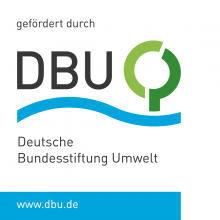
The Special Feature is part of the project funding of the German Federal Environmental Foundation (Deutsche Bundesstiftung Umwelt – DBU), in the framework of which we are producing four special features over two years on the topic of “Opportunities and potentials of digitalisation for sustainable development”.
More information here.

